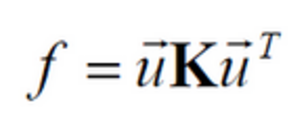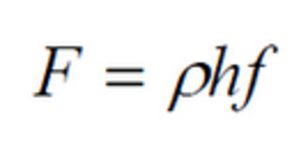When and why does the Voellmy model work well for Avalanches? ¶
Answer:
Avalanches
The Voellmy model – coupled with the calibrated parameters – can be used to
- predict the runout distance and
- predict the maximum flow velocity of extreme, large snow avalanches.
This is one of the important research results from the Vallée de la Sionne test site. The Voellmy parameters that we recommend describe the front of a dry-snow avalanche. Because the front defines the runout distance and maximum velocity the Voellmy model will work.
However, the Voellmy model will not describe the avalanche flow behind the front, at the tail of the avalanche. Here, measurements show an increase in the friction (a rapid decrease in speed). This effect causes avalanches to elongate and eventually deposit mass. Therefore, the Voellmy model will not predict the deposition behaviour.
The Voellmy model has difficulties to predict the runout of small avalanches, which sometimes begin immediately to deposit or “to starve”. Of course, small avalanches can be modelled using higher μ and ξ values, but this is a very ad-hoc approach.
What numerical solution technique does RAMMS use? ¶
Answer:
In all RAMMS versions (Avalanche and Debrisflow) up to Version 1.5.01, an ENO (Essentially Non-Oscillatory) scheme was used to numerically solve the governing differential equations (Christen et al., 2010). However, the numerical solution was implemented on strictly orthogonal grids. This improves computational speed, but introduces numerical instabilities especially in steep terrain.
The new Version 1.6.20 uses the same second order ENO scheme, but now on general quadrilateral grid. This new scheme improves numerical stability, but slows the computational speed somewhat. The introduction of this stable ENO scheme allows us to use lower H_cutoff values minimizing mass loss during calculations. The standard value of H_cutoff is 0.000001 m.
What friction models are used in RAMMS? ¶
Answer:
RAMMS (Avalanche and Debrisflow modules) employs a Voellmy-fluid friction model. This model divides the frictional resistance into two parts:
- a dry-Coulomb type friction (coefficient μ ) that scales with the normal stress
- and a velocity squared drag (coefficient ξ).
This model has found wide application in the simulation of mass movements, especially snow avalanches. The Voellmy model has been in use in Switzerland for a long time and a set of calibrated parameters is available.
How is cohesion used in RAMMS::Avalanche? ¶
Answer:
Since Version 1.6.20 the basic Voellmy equation has been modified to include cohesion, see equation below, where C is the cohesion of the flowing material. Unlike a standard Mohr-Coulomb type relation this formula ensures that S→0 when both N→0 and U→0. It increases the shear stress and therefore causes the avalanche or debris flow to stop earlier, depending on the value of C.
This formula has been established using chute experiments with flowing snow (Platzer et al., 2007a and Platzer et al., 2007b). Snow has different cohesive properties depending on snow temperature. Wet snow avalanches have higher cohesion values; dry snow avalanches have lower cohesion values. Cohesion can help reduce spurious numerical diffusion in runout zones, providing a clearer delineation of the deposition zone. Cohesion values (unit Pascal) may be entered in the Mu/Xi tab of the Run Simulation window.
Recommended values may be found in the following:
- Dry snow: 0 – 100 Pa
- Wet snow: 100 – 300 Pa
Please use cohesion values with care!
Does RAMMS take terrain curvature into account? ¶
Answer:
Since Version 1.6.20, the normal force N now includes centrifugal forces arising from the terrain curvature. We use the method proposed by Fischer et al. (2012) which was specifically developed for RAMMS.
The centrifugal acceleration ƒ is both a function of the avalanche velocity and terrain curvature. Typically this increases the friction, causing the avalanche to slow down in tortuous and twisted flow paths. It can change the location of the deposition once the flow leaves the gully.
Curvature may be activated/deactivated via the menu ‘Help → Advanced… → Curvature’.
How long does it take to perform a simulation? ¶
Answer
The time required to simulate an avalanche or a debris flow is a function of the finite volume grid resolution and the size of the calculation domain. Typically we use 5m resolutions and the simulations require around 10 minutes. We usually perform the initial simulations at 10 m resolution and therefore we have results in 1 or 2 minutes. When we have a solution that we like we might take a look at the problem at 2m resolution.



